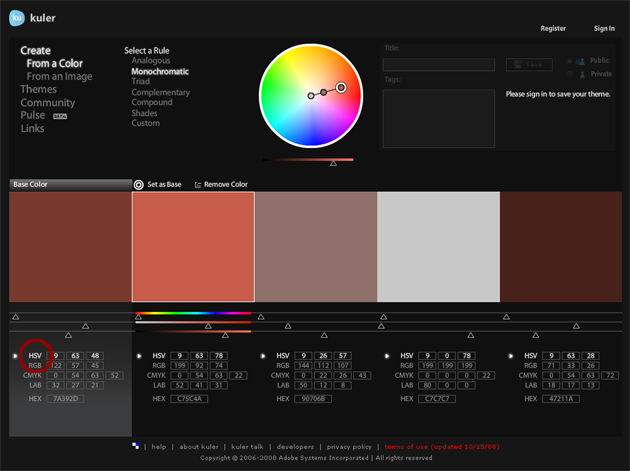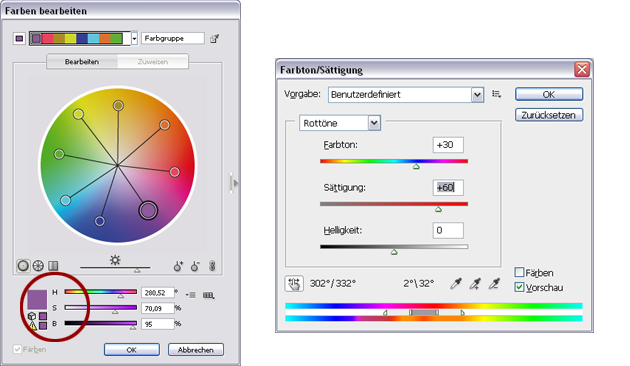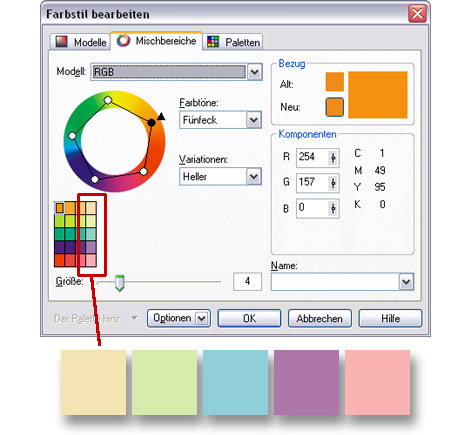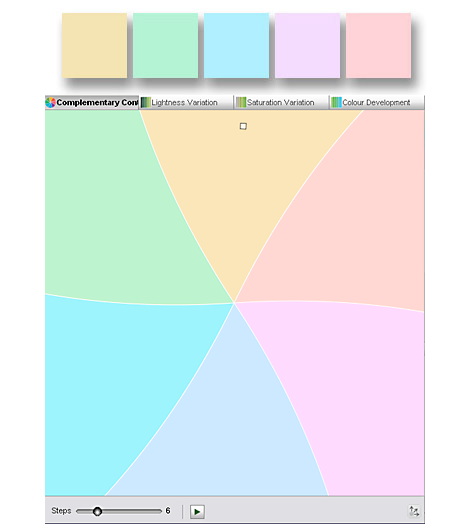Natural Colour Harmonies through CIEL*a*b*-Calculations
How is the quality of the calculated colour harmonies?
Harmony Calculations – a Contradiction in itself?
When it comes to colours we are dealing with perceptions. Perceptions are individually different, there is no “right“ or “wrong“ and no exact mathematics of perceptions. Are harmony calculations even meaningful?
Experience shows: The utilisation of simple rules of colour composition (variations of a colour through lightness or saturation; opposing colour composition) leads to results that we generally perceive as harmonic. Harmony calculation is quite meaningful as the delivery mechanism of an idea, but not as absolute truth. Your own discernment remains important. Full particulars on the Harmony pages.
In order for the calculated results to hold up to our discernment the calculations should reflect our perceptions.

Variations of the lightness with unchanging chroma, above according to HSB (RGB), below according to HLC (L*a*b*).
Which variation would you use?
HSB– and HLC-Harmony Calculations
There are many other software products in which complementary-n-angle or other harmonies are calculated. For example this calculation is possible in numerous graphic programs, such as CorelDRAW, Illustrator, and so on. There is almost always a decided drawback: The calculations are usually performed in RGB (i.e. derived from HSB/HSV/HSL-model). In contrast to that harmonies in the DIGITAL COLOUR ATLAS are calculated in the CIELAB-colour model.
Among experts it is undisputed that CIEL*a*b* has the better approach than HSB (=RGB) to modeling our colour perceptions. As an example an even CIELAB-L*-increase is, in our perception, actually consistent, an even HSB-Brightness-increase much less so.
In other words: The colour harmonies calculated with the DIGITAL COLOUR ATLAS are much more harmonic then colour harmonies calculated by other known software products.


Adobe Kuler calculates colour variations in RGB just as in Adobe Illustrator. Even the numerous options change very little about the improveable results.
Example of a 5-part colour wheel to light beige out of CorelDRAW...


... and out of the DIGITAL COLOUR ATLAS.